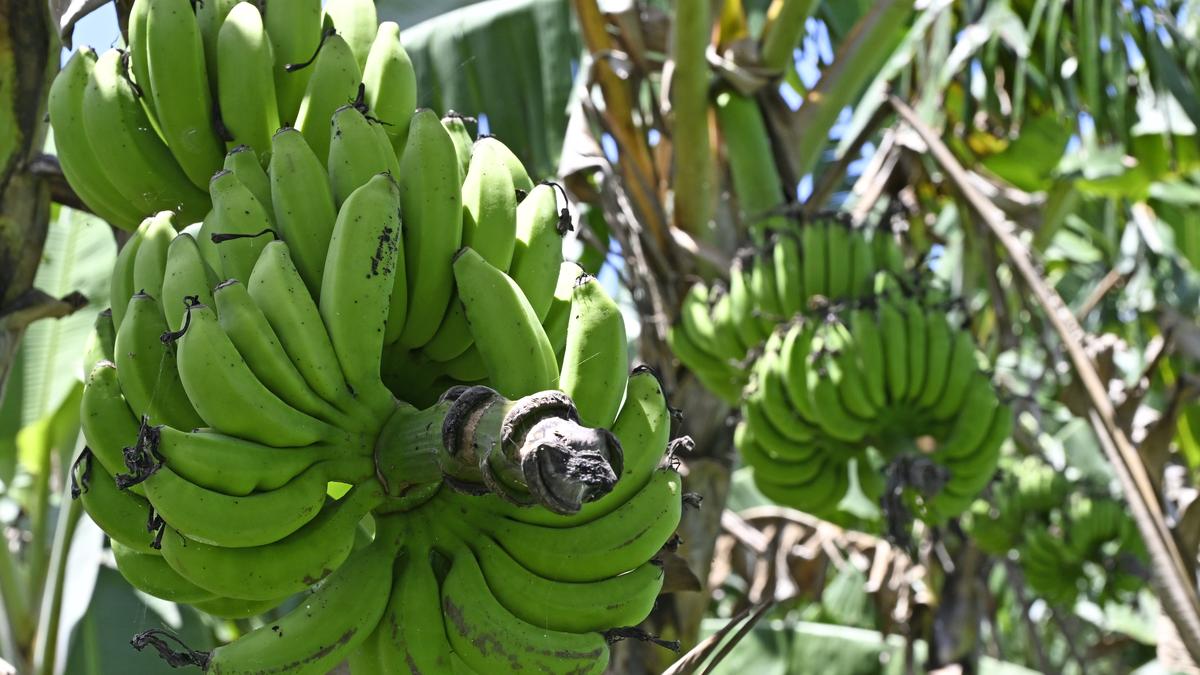
Nanjangud rasabale: A tale of revival Premium
The Hindu
Revival of Nanjangud rasabale banana variety through scientific interventions, subsidies, and marketing strategies in Karnataka.
Bengaluru
On a cloudy weekday afternoon, Nanjundaswamy was busy tending to his banana plants in his orchard at Kurahatti village in Nanjangud taluk, around 40 km from Mysuru in Karnataka. The farmer, in his 50s, is the proud owner of 850 plants of a particularly special variety of banana called Nanjangud rasabale that enjoys a Geographical Indication (GI) certification.
“The taste and pulp of our banana cannot be found in any other variety and anywhere else. The more organically we grow it, the better it tastes,” Nanjundaswamy says, beaming with pride.
This variety of rasabale is unique to Nanjangud and was awarded the GI tag in 2006 for its thick pulp and distinct taste and aroma. While the tag was expected to boost the cultivation of this variety, the next few years saw the exact opposite happening — the crop almost got wiped out.
According to the Horticulture Department data, a total of 180 farmers cultivated rasabale on 100 hectares of land in 2006-07. By 2019-20, the number came down to 15, who were cultivating it on a mere 10 hectares.
With the famed banana variety on the brink, the government started taking many steps for its revival. The department along with the Indian Council of Agricultural Research (ICAR)-National Research Centre for Banana (NRCB), Tiruchirappalli, provided pesticides which would fight a deadly fungus that had infested the crop and guided growers on healthy cultivation habits.
The government also devised a six-year plan from 2023-24 to 2028-29 which included protection of the crop, expansion of cultivation area, post-harvest management, and marketing. With these plans, by the end of 2023-24, rasabale revived. It came to be cultivated on 75 hectares by 200 farmers. The department has plans to add 12 hectares of cultivation area this year, of which over 5 hectares has been added so far.

 Run 3 Space | Play Space Running Game
Run 3 Space | Play Space Running Game Traffic Jam 3D | Online Racing Game
Traffic Jam 3D | Online Racing Game Duck Hunt | Play Old Classic Game
Duck Hunt | Play Old Classic Game











